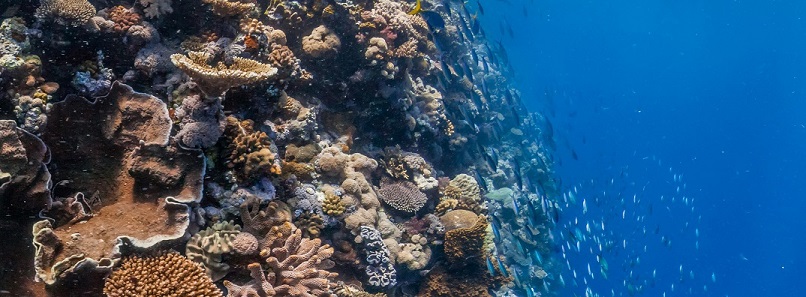- ABOUT US
- PROGRAM AREAS
- CONSERVATION APPROACH
- EDUCATION
- MULTIMEDIA
Lessons from Coral Reefs for World Heritage Sites

United Nations Educational, Scientific, and Cultural Organization—better known as UNESCO—World Heritage Sites are highly diverse, ranging from natural places, like Australia’s Great Barrier Reef, to cultural sites, such as the Statue of Liberty in New York. All World Heritage Sites are selected for their globally significant cultural or natural values; most, if not all, now suffer from the effects of a changing climate.
The Great Barrier Reef experienced extensive mortality during multiple coral bleaching events in recent years, and the Statue of Liberty sits on an island that is continuously at risk from increasing storms and sea level rise. Yet questions remain on how to systematically include climate change effects in World Heritage processes.
Scott Heron, Mark Eakin, and Erick Geiger from NOAA Coral Reef Watch, led an assessment of the impacts of climate change on World Heritage coral reefs, the results of which showed that most of the coral reef sites experienced heat stress and bleaching during the three years of the most recent global event. All reef sites will be heavily impacted by 2100 if the climate continues to change at the current rate. However, an additional analysis revealed that limiting warming to 1.5 degrees Celsius above pre-industrial levels could prevent the worst impacts to reef sites.
Alongside the assessment, Heron and others developed a climate change vulnerability index as a quick assessment tool that can be used with all types of World Heritage sites. The index provides UNESCO with a way to systematically account for climate change in designating and managing sites, supporting their goal to protect cultural and natural heritage for future generations.
About Us

The NOAA Coral Reef Conservation Program was established in 2000 by the Coral Reef Conservation Act. Headquartered in Silver Spring, Maryland, the program is part of NOAA's Office for Coastal Management.

The Coral Reef Information System (CoRIS) is the program's information portal that provides access to NOAA coral reef data and products.
Work With US
U.S. Coral Reef Task Force
Funding Opportunities
Employment
Fellowship Program
Contracting Assistance
Graphic Identifier
Featured Stories Archive

Access the archive of featured stories here...
Feedback
Thank you for visiting NOAA’s Coral Reef Conservation Program online. Please take our website satisfaction survey. We welcome your ideas, comments, and feedback. Questions? Email coralreef@noaa.gov.
Stay Connected
Contact Us
NOAA’s Coral Reef Conservation Program
SSMC4, 10th Floor
1305 East West Highway
Silver Spring, MD 20910
coralreef@noaa.gov
